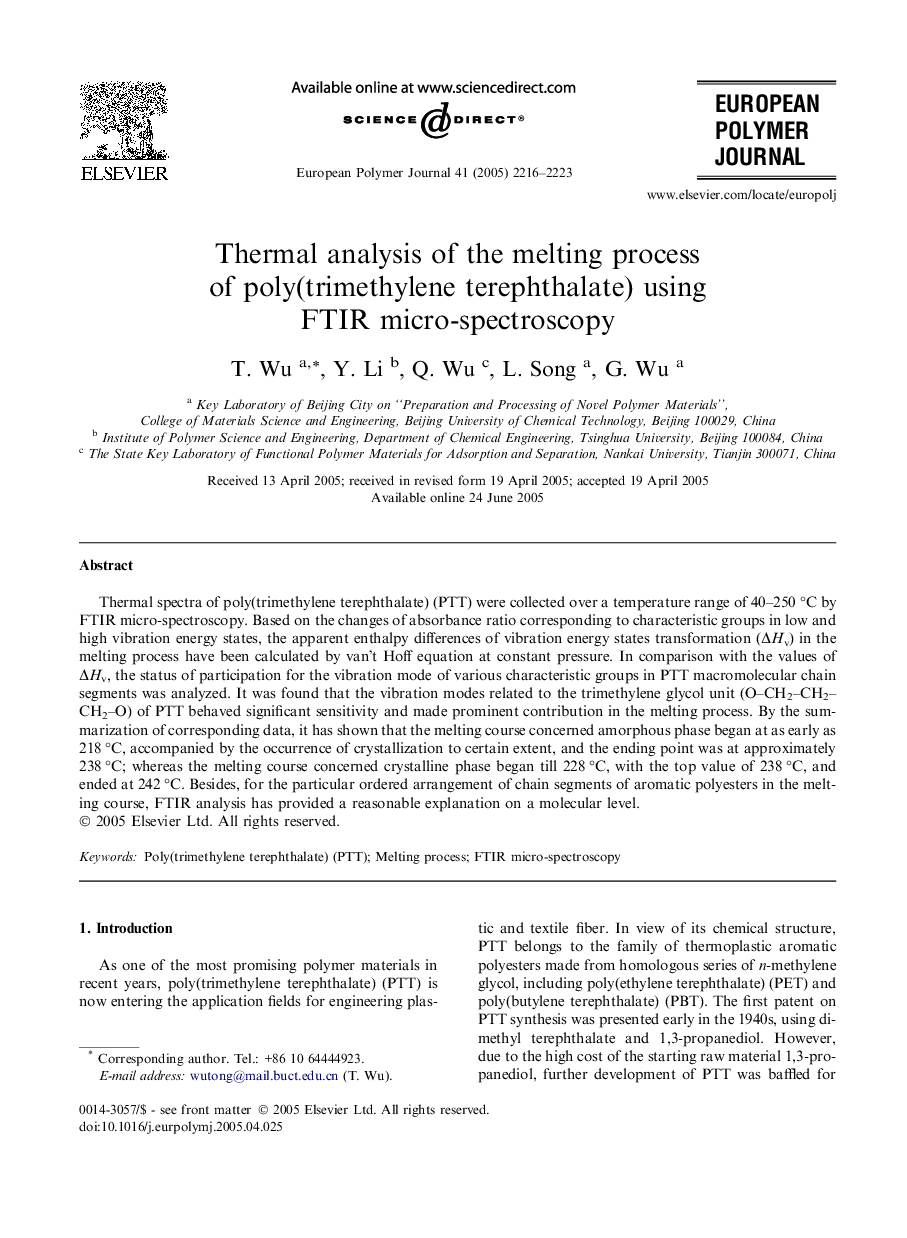| Article ID | Journal | Published Year | Pages | File Type |
|---|---|---|---|---|
| 1400310 | European Polymer Journal | 2005 | 8 Pages |
Thermal spectra of poly(trimethylene terephthalate) (PTT) were collected over a temperature range of 40–250 °C by FTIR micro-spectroscopy. Based on the changes of absorbance ratio corresponding to characteristic groups in low and high vibration energy states, the apparent enthalpy differences of vibration energy states transformation (ΔHv) in the melting process have been calculated by van’t Hoff equation at constant pressure. In comparison with the values of ΔHv, the status of participation for the vibration mode of various characteristic groups in PTT macromolecular chain segments was analyzed. It was found that the vibration modes related to the trimethylene glycol unit (O–CH2–CH2–CH2–O) of PTT behaved significant sensitivity and made prominent contribution in the melting process. By the summarization of corresponding data, it has shown that the melting course concerned amorphous phase began at as early as 218 °C, accompanied by the occurrence of crystallization to certain extent, and the ending point was at approximately 238 °C; whereas the melting course concerned crystalline phase began till 228 °C, with the top value of 238 °C, and ended at 242 °C. Besides, for the particular ordered arrangement of chain segments of aromatic polyesters in the melting course, FTIR analysis has provided a reasonable explanation on a molecular level.
